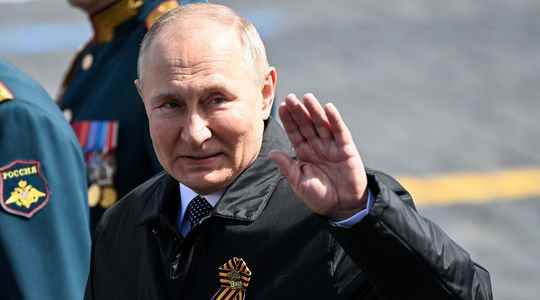Vladimir Putin is not going to lay down his arms in his war against Ukraine. On the contrary, according to US intelligence. The Russian president does not intend to limit his desire for occupation to the Donbass region of Ukraine alone. He wants to take the conflict to Transnistria, a region of Moldova which seceded in 1990 and where the Russian army has a military base, declared this Tuesday May 10 the head of American intelligence, Avril Haines, during a hearing in Congress.
“We believe that President Putin is preparing for a protracted conflict in Ukraine, during which he still intends to achieve objectives beyond the Donbass,” said Avril Haines as elected officials prepare to unblock a huge budget extension of 40 billion dollars for Ukraine.
Having given up on seizing kyiv, the Russian army deployed in the south and east of the country, officially to “liberate” the separatist regions of Donetsk and Lugansk, in the Donbass, which could allow Moscow to fully control the Sea of Azov and ensure territorial continuity with Crimea, which Russia annexed in 2014. But this repositioning around the Donbass “is only temporary” and the Russian army wants to continue its advance to create a “land bridge” in southern Ukraine, to the large port of Odessa and the Moldovan border, explained Avril Haines.
US intelligence believes the Russian military wants to “extend” this land bridge to Transnistria, she added. If it is “possible” that the Russian forces achieve this objective in the coming months, “they will not be able to reach Transnistria and include Odessa without decreeing a form of general mobilization”, she added.
Moreover, the Russian president “is probably counting on a weakening of the determination of the United States and the European Union when the food shortages and rising energy prices will get worse,” the US intelligence chief warned.
The fear of a “potential military escalation”
According to her, Vladimir Putin’s ambitions exceed the capacities of the Russian army and this “probably means that we will evolve in the coming months along a more unpredictable trajectory and potentially an escalation”, added Avril Haines.
“The current trend increases the chances that President Putin will turn to more drastic measures, including the establishment of martial law [NDLR : l’instauration dans un pays d’un état juridique d’exception au sein duquel l’armée assure le maintien de l’ordre à la place de la police ou en collaboration avec celle-ci]the reorientation of industrial production or a potential military escalation in order to free up the resources necessary to achieve its objectives,” she continued.
The head of the military intelligence agency, General Scott Berrier, for his part described the state of the fighting between Russian and Ukrainian forces as that of a “stalemate”. But that could change if Moscow formally declares war and mobilizes more forces, he noted. “If Russia doesn’t declare war and mobilize, the stalemate will last and I don’t see a way out for either side,” he said.
“If they mobilize and declare war, thousands more soldiers will join the fighting and even if they will not necessarily be as well trained or as competent (as the current forces), it will have a mass effect”, a- he warned.
Avril Haines, who for her part oversees all of the American intelligence agencies, including the CIA and the NSA, reaffirmed that Washington does not believe that the master of the Kremlin is ready to use nuclear weapons. “We continue to believe that President Putin will only order the use of nuclear weapons if he perceives an existential threat to the Russian state or regime,” she noted.
The Russian president could nevertheless resort to it “if he thinks that he is losing the war in Ukraine and that NATO is either intervening or preparing to intervene”, she specified. But, even in this hypothesis, “it is likely that he would send signals” before doing so, noted Avril Haines.
